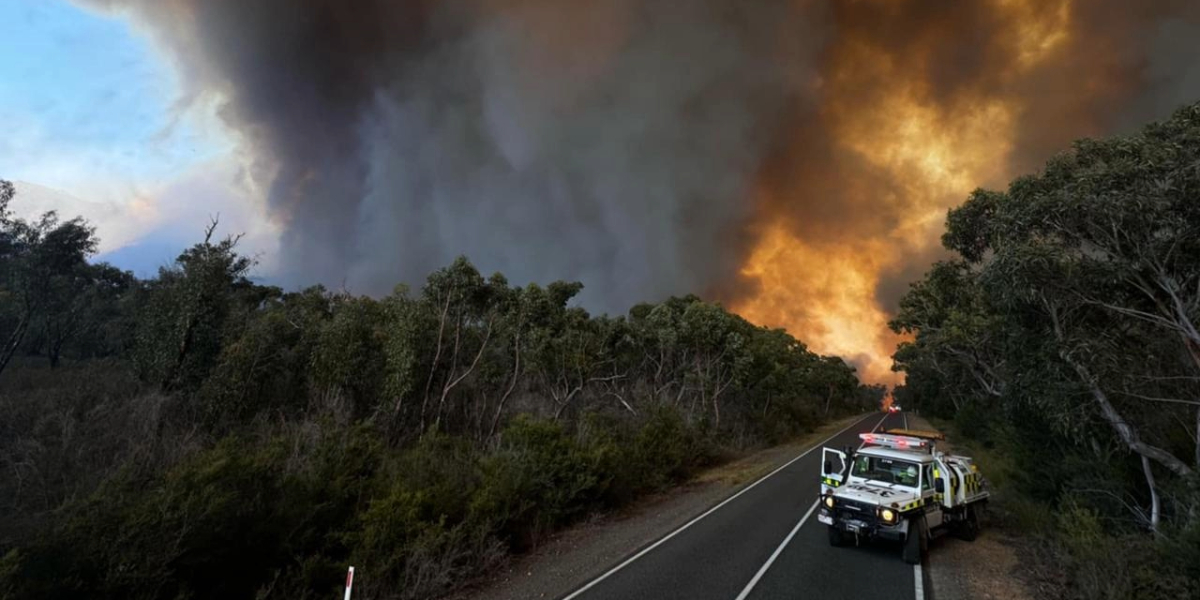A total fire ban has been put in place today in much of the New England as the heat band that has contributed to extreme fire conditions in Victoria moves north.
A cool change has eased conditions for firefighters battling an out-of-control blaze in Victoria’s Grampians following the worst bushfire conditions since 2019’s Black Summer.
Temperatures plunged on Thursday as gusty westerly winds swept over the blazes in the state’s west that have raged for more than a week and scorched more than 70,000 hectares of bushland.
Authorities issued a flurry of warnings to evacuate or seek shelter as the afternoon wind change took hold and fanned the flames in unpredictable directions.
The cool change had since slowed the spread of the fires as temperatures plunged, humidity rose and a small amount of rain fell, Victoria State Control Centre spokesman Luke Hegarty said.
However, six emergency warnings remained in place as of 3am (AEDT) Friday.
Hegarty said in a late-night update that although authorities expected raging blazes to ease, “we are not yet out of the woods with these fires”.
The update came after authorities warned homes were likely to be destroyed by the blaze as Victoria faced the worst bushfire conditions since Black Summer, with flames expected to rage for weeks.
The Grampians fire was significant and was likely to burn for weeks even with 600 personnel on the ground fighting it, Emergency Management Commissioner Rick Nugent said.
“(It is) very difficult terrain and very dry in there. The conditions are such that it will be extremely difficult to put out,” he said.
The blaze has caused significant damage to the environment, fencing, outbuildings and sheds and resulted in stock losses, Mr Nugent said.
“I wouldn’t be surprised at some point if we do have residential losses,” he said.
While Victoria will get some reprieve with a cool change, the hot, dry and windy conditions will push into parts of central and northern NSW, bringing extreme fire danger on Friday.
Total fire bans have been declared for the Hunter, Greater Sydney, North Western (including Moree and Narrabri) and Northern Slopes (including Inverell, Gunnedah and Tamworth) fire weather regions. The New England fire weather region (including Armidale, Uralla, Walcha, Glen Innes and Tenterfield) has a high fire danger warning but a total fire ban is not in place at this time.
The combination of heat and wind is the cause for concern, with the North West Slopes and Plains expecting variable winds, swinging from northeasterly to northwesterly and between 20 and 40 km/h throughout the day, with maximum temperatures between 36 and 41 degrees. The Northern Tablelands is expecting winds northwesterly 25 to 40 km/h, and maximum temperatures between 31 to 36, before the cool change arrives with a likely thunderstorm this afternoon.
A total fire ban means no fires out in the open. A total fire ban helps limit the potential of fires developing.
During a Total Fire Ban you cannot light, maintain or use a fire in the open, or to carry out any activity in the open that causes, or is likely to cause, a fire.
General purpose hot works (such as welding, grinding or gas cutting or any activity that produces a spark or flame) are not to be done in the open.
The NSW RFS strongly recommends you reconsider activities such as such using a tractor or slashing, to help reduce the chance of a fire starting on your property.
Read more about what you can and can’t do in a total fire ban.


